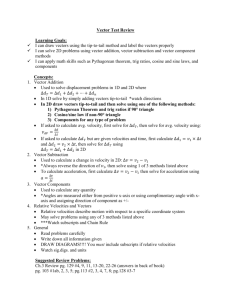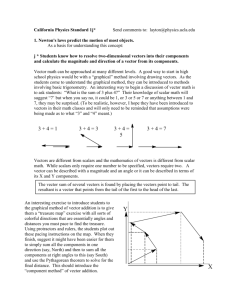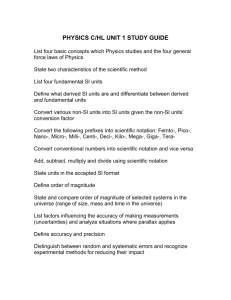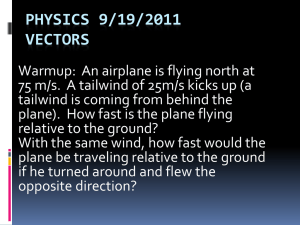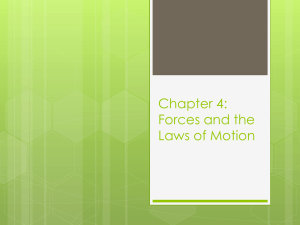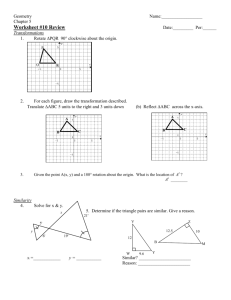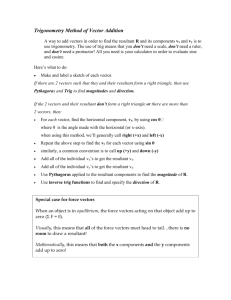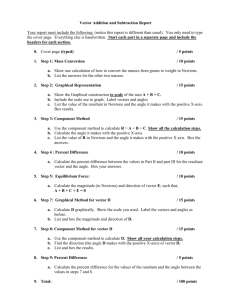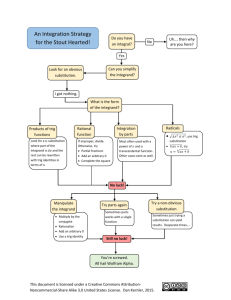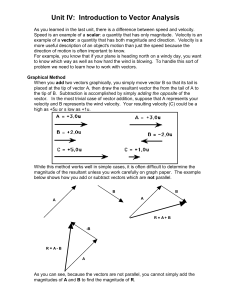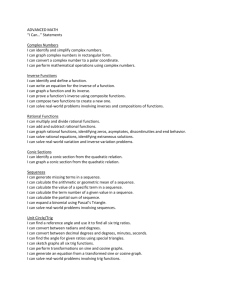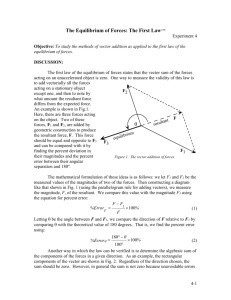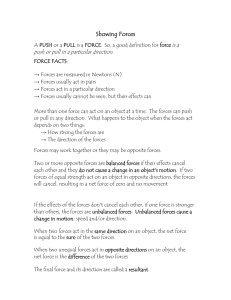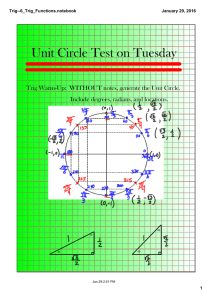Solving 2D-Vector Problems using Trigonometric Rules
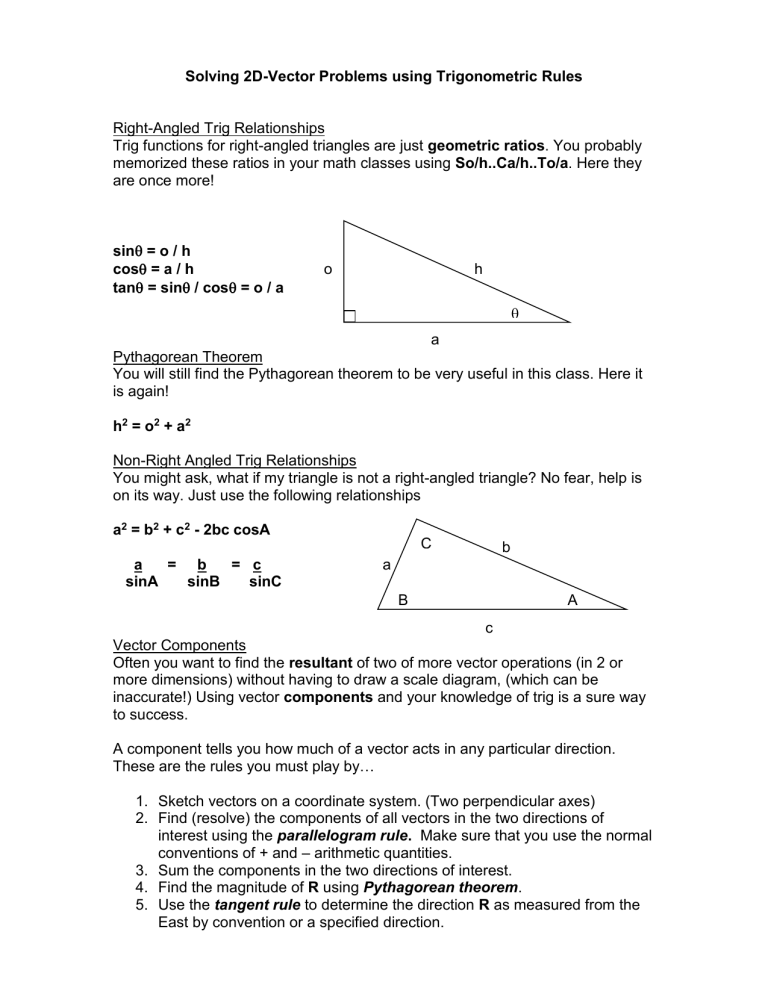
Solving 2D-Vector Problems using Trigonometric Rules
Right-Angled Trig Relationships
Trig functions for right-angled triangles are just geometric ratios . You probably memorized these ratios in your math classes using So/h..Ca/h..To/a . Here they are once more! sin
= o / h cos
= a / h o h tan
= sin
/ cos
= o / a
a
Pythagorean Theorem
You will still find the Pythagorean theorem to be very useful in this class. Here it is again! h 2 = o 2 + a 2
Non-Right Angled Trig Relationships
You might ask, what if my triangle is not a right-angled triangle? No fear, help is on its way. Just use the following relationships a 2 = b 2 + c 2 - 2bc cosA
C b
a = b = c a
sinA sinB sinC
B
c
A
Vector Components
Often you want to find the resultant of two of more vector operations (in 2 or more dimensions) without having to draw a scale diagram, (which can be inaccurate!) Using vector components and your knowledge of trig is a sure way to success.
A component tells you how much of a vector acts in any particular direction.
These are the rules you must play by…
1. Sketch vectors on a coordinate system. (Two perpendicular axes)
2. Find (resolve) the components of all vectors in the two directions of interest using the parallelogram rule.
Make sure that you use the normal conventions of + and – arithmetic quantities.
3. Sum the components in the two directions of interest.
4. Find the magnitude of R using Pythagorean theorem .
5. Use the tangent rule to determine the direction R as measured from the
East by convention or a specified direction.
B
R
Examples
1. Use trig relationships to determine i) the other component (in the vertical
direction) and ii) the resultant ( R ).
R
60 0
v h
= 35 m/s
2. Determine the resultant ( R ) of the following vectors by using the horizontal and vertical components of A and B .
A = 80 Newtons
B = 60 Newtons
60 0 30 0
A
H V


